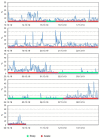Current Knowledge and Future Perspectives on Awake Bruxism Assessment: Expert Consensus Recommendations
- PMID: 36079013
- PMCID: PMC9457508
- DOI: 10.3390/jcm11175083
Current Knowledge and Future Perspectives on Awake Bruxism Assessment: Expert Consensus Recommendations
Abstract
Awake bruxism (AB) is differentiated from sleep bruxism (SB) by the differences in etiology, comorbidities, and consequences related to the different spectrum of muscle activities exerted in relation to the different circadian manifestations. Furthermore, less literature data are available on AB than on SB. The introduction of ecological momentary assessment (EMA) strategies has allowed for collecting valuable data on the frequency of the different activities reported by an individual in his/her natural environment. This strategy has been further improved with the recent use of smartphone technologies. Recent studies have described an average frequency of AB behaviors, within the range of 23-40% for otherwise healthy young adults. An association between AB and some psychological traits has emerged, and the findings have indicated that patients with musculoskeletal symptoms (e.g., temporomandibular joint and/or muscle pain, muscle stiffness, and fatigue) report higher AB frequencies. Preliminary data suggest that muscle bracing and teeth contact are the most commonly reported behaviors, while teeth clenching is much less frequently reported than commonly believed previously. Report of teeth grinding during wakefulness is almost absent. This paper has critically reviewed the currently available approaches for the assessment of AB. In addition, some future perspectives and suggestions for further research have been provided.
Keywords: awake bruxism; bruxism; ecological momentary assessment; electromyography; masticatory muscle activity; self report; sleep bruxism; temporomandibular disorders.
Conflict of interest statement
A.B. took part as non-paid advisor to the development of the BruxApp software. Other Authors do not have conflict of interests concerning this article.
Figures



Similar articles
-
Ecological Momentary Assessment of Awake Bruxism Behaviors: A Scoping Review of Findings from Smartphone-Based Studies in Healthy Young Adults.J Clin Med. 2023 Feb 28;12(5):1904. doi: 10.3390/jcm12051904. J Clin Med. 2023. PMID: 36902690 Free PMC article.
-
Long-Term Study on the Fluctuation of Self-Reported Awake Bruxism in a Cohort of Healthy Young Adults.J Oral Rehabil. 2025 Jan;52(1):37-42. doi: 10.1111/joor.13872. Epub 2024 Oct 9. J Oral Rehabil. 2025. PMID: 39381852 Free PMC article.
-
Ecological Momentary Assessment and Intervention Principles for the Study of Awake Bruxism Behaviors, Part 1: General Principles and Preliminary Data on Healthy Young Italian Adults.Front Neurol. 2019 Mar 1;10:169. doi: 10.3389/fneur.2019.00169. eCollection 2019. Front Neurol. 2019. PMID: 30881335 Free PMC article.
-
Sleep Bruxism Self-Report and Awake Bruxism: An Ecological Momentary Assessment.Oral Dis. 2025 Jul 1. doi: 10.1111/odi.15400. Online ahead of print. Oral Dis. 2025. PMID: 40589372
-
Research routes on awake bruxism metrics: Implications of the updated bruxism definition and evaluation strategies.J Oral Rehabil. 2024 Jan;51(1):150-161. doi: 10.1111/joor.13514. Epub 2023 Jun 16. J Oral Rehabil. 2024. PMID: 37191494 Review.
Cited by
-
Self-reported mandible bracing and teeth clenching are associated with anxiety and depression traits in a group of healthy young individuals.J Oral Facial Pain Headache. 2024 Dec;38(4):85-90. doi: 10.22514/jofph.2024.041. Epub 2024 Dec 12. J Oral Facial Pain Headache. 2024. PMID: 39800959 Free PMC article.
-
Ecological Momentary Assessment of Masseter Muscle Activity in Patients with Bruxism.Int J Environ Res Public Health. 2022 Dec 29;20(1):581. doi: 10.3390/ijerph20010581. Int J Environ Res Public Health. 2022. PMID: 36612902 Free PMC article.
-
Comparison of the Oral Health-Related Quality of Life, Sleep Quality, and Oral Health Literacy in Sleep and Awake Bruxism: Results from Family Medicine Practice.Int J Clin Pract. 2023 Sep 30;2023:1186278. doi: 10.1155/2023/1186278. eCollection 2023. Int J Clin Pract. 2023. PMID: 37808624 Free PMC article.
-
Ecological Momentary Assessment of Awake Bruxism Behaviors: A Scoping Review of Findings from Smartphone-Based Studies in Healthy Young Adults.J Clin Med. 2023 Feb 28;12(5):1904. doi: 10.3390/jcm12051904. J Clin Med. 2023. PMID: 36902690 Free PMC article.
-
Obstructive sleep apnoea, sleep bruxism and gastroesophageal reflux - mutually interacting conditions? A literature review.Aust Dent J. 2024 Jun;69 Suppl 1(Suppl 1):S38-S44. doi: 10.1111/adj.13042. Epub 2024 Oct 21. Aust Dent J. 2024. PMID: 39431314 Free PMC article. Review.
References
-
- Lobbezoo F., Ahlberg J., Glaros A.G., Kato T., Koyano K., Lavigne G.J., de Leeuw R., Manfredini D., Svensson P., Winocur E. Bruxism defined and graded: An international consensus. J. Oral Rehabil. 2013;40:2–4. - PubMed
-
- Manfredini D., De Laat A., Winocur E., Ahlberg J. Why not stop looking at bruxism as a black/white condition? Aetiology could be unrelated to clinical consequences. J. Oral Rehabil. 2016;43:799–801. - PubMed
LinkOut - more resources
Full Text Sources
Research Materials

